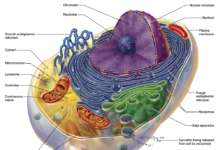Clinical Feedback
Migraines affect more than 28 million people in the United States, hitting with symptoms that can include throbbing headache pain, nausea, vomiting and sensitivity to light and sound. We recently received a remarkable clinical report of a patient reporting relief from her migraine headaches from an advanced herbal allergy support formula.
Case History
The patient, a non-smoking, otherwise healthy 47-year-old female, came to our clinic seeking relief from recent debilitating migraine attacks. Her migraines were associated with her menstrual cycle, typically beginning 1 to 2 days prior to menses, and lasting for 2 to 3 days. Symptoms were varied in intensity and included general malaise, nausea and fatigue.
The patient had already attempted self-therapy with a well-known brand of standardized feverfew. Feverfew treatment resulted in moderate relief (symptoms were reduced by about a third), however the continued intensity of the attacks was causing significant disruption to her life.
We started the patient with a brief course of the herbal formula, beginning with 2 capsules as a loading dose in the morning, followed by 1 capsule in evening, on the first day of symptoms.
Treatment with the formula resulted in the total resolution of her migraine symptoms for the remainder of her menstrual period, with the strongest impact occurring within 20 minutes of the first dose. She has continued to use this approach and has not had a reoccurrence of menstrual migraines since.
JR Gates, DHSc
Clinical Preventive Care Specialist
The Role of Allergies in Migraines
This letter prompted us to review the scientific literature to find a link between allergies and migraines, and to review the mechanisms of actions of the herbs that might help reduce migraine symptoms.
Allergen exposure causes release of a cascade of various chemical reactions that result in acute inflammation of local tissues. The allergen first binds to IgE antibodies on mast cells. The result of this binding is activation of various enzymes that induce mast cell granules to release their contents – substances such as histamine, platelet-activating factor, prostaglandins, and leukotrienes – and these substances trigger the allergy attack by causing inflammation in the local tissues.
For example, histamine dilates blood vessels, causing redness and release of tissue-swelling fluids. It also constricts bronchial tubes, impairs breathing, irritates nerve endings, causing itching and pain, and stimulates production of mucus in the respiratory system. The allergy sufferer experiences sneezing, an itchy, drippy or congested nose, wheezing, coughing, shortness of breath, and even skin swelling, hives or rashes.
Research reveals that allergies and migraines often have a similar trigger. (1,2,3,5) When histamine is released the resulting vasodilation of blood vessels can irritate the trigeminal and parasympathetic nerves, leading to migraine headaches. (5)
Many of the herbs addressed here, including Xanthium, Schizonepeta and Angelica dahuricae, interrupt histamine release from mast cells to inhibit allergic reactions. (4,6,7,8) Because histamine release is a common link between allergies and migraines, it is feasible to consider a formula containing these herbal ingredient for migraine headaches, even in the absence of other allergic symptoms.
References
1. Bellamy JL, Cady RK, Durham PL. Salivary levels of CGRP and VIP in rhinosinusitis and migraine patients. Headache. 2006 Jan;46(1):24-33.
2. Ku M, Silverman B, Prifti N, Ying W, Persaud Y, Schneider A. Prevalence of migraine headaches in patients with allergic rhinitis. Ann Allergy Asthma Immunol. 2006 Aug;97(2):226-30.
3. Gazerani P, Pourpak Z, Abmadiani A, Hemmati A, Kazemnejad A. A correlation between migraine, histamine and immunoglobulin e. Scand J Immunol. 2003 Mar;57(3):286-90.
4. Kimura Y, Okuda H. Histamine-release effectors from Angelica dahurica var. dahurica root. J Nat Prod. 1997 Mar;60(3):249-51.
5. Theoharides TC, Donelan J, Kandere-Grzybowska K, Kanstantinidou A. The role of mast cells in migraine pathophysiology. Brain Res Rev. 2005 Jul;49(1):65-76.
6. Hong SH, Jeong HJ, Kim HM. Inhibitory effects of Xanthii fructus extract on mast cell-mediated allergic reaction in murine model. J Ethnopharmacol. 2003 Oct;88(2-3):229-34.
7. Shin TY, Jeong HJ, Jun SM, Chae HJ, Kim HR, Baek SH, Kim HM. Effect of Schizonepeta tenuifolia extract on mast cell-mediated immediate-type hypersensitivity in rats. Immunopharmacol Immunotoxicol. 1999 Nov;21(4):705-15.
8. Tohda C, Kakihara Y, Komatsu K, Kuraishi Y. Inhibitory effects of methanol extracts of herbal medicines on substance P-induced itch-scratch response. Biol Pharm Bull. 2000 May;23(5):599-601.













